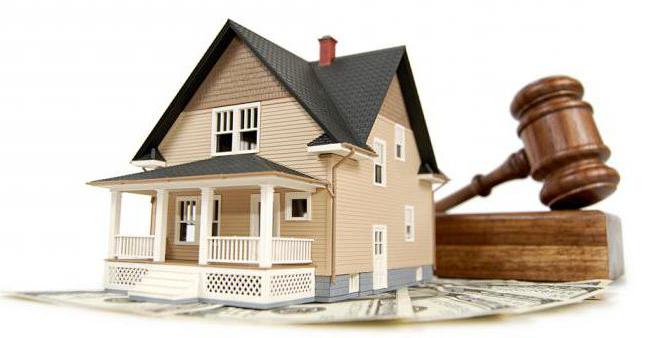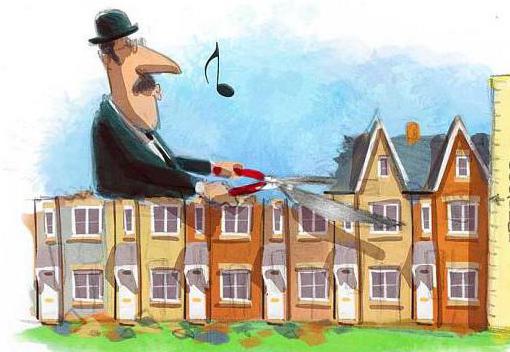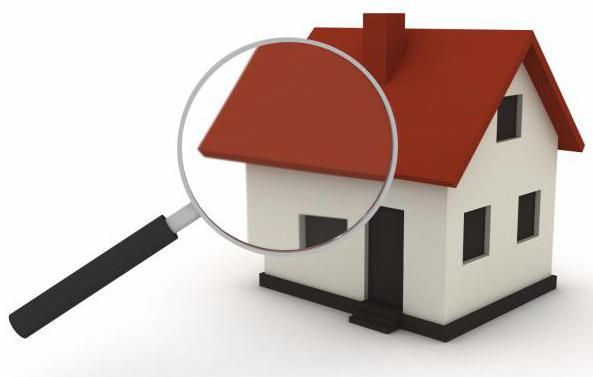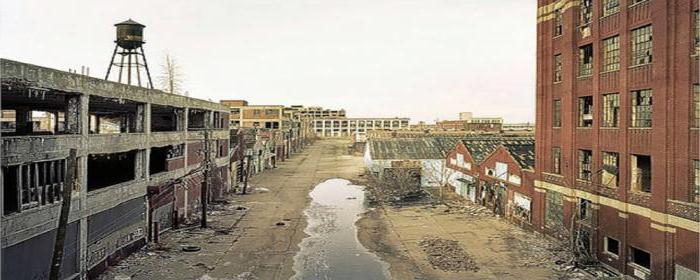In today's Russian market, resale value is becoming increasingly important. Usually it is used to work with bankrupt enterprises or objects of long-term construction of the federal fund. The process of assessing property is particularly important in a crisis situation in the country.
Cost types
Each product is characterized by value. In standard conditions, there is a market one, which is considered the basis for assessing an object. When deviating from its characteristic features, other types of value arise.
Market - this is the price of the object, which is considered the most probable. The subject of evaluation is sold in a competitive market. The parties are informed with the necessary data about the object. The price is not affected by emergency reasons, which include:
- There are no obligations imposed on the parties to the transaction: one must sell, the other must redeem.
- The object is put up for public auction.
- The price of the goods is expressed in monetary terms.
- The amount of the transaction seems adequate, there is no coercion to the sale.
- Both parties to the transaction own information about its subject matter and act in their own interests.
Failure to comply with one of the described criteria of market value leads to the appearance of other types. This fact requires a clear definition of the most appropriate form in any given situation. Investment value arises on the acquisition of property with clear objectives. This is a purely commercial desire for profit in the future, and non-economic reasons, for example, getting pleasure from an old picture. Salvage is required when extraordinary circumstances arise and the price of the property is underestimated.
The cost of liquidation - what is it?
The concept of residual value refers to the money supply that can be obtained from the liquidation of assets. These include property that belongs to an individual or legal entity. Accordingly, this is the real amount that the owner expects when selling the object in a short time. The Russian market does not yet have a sufficient statistical base for the sale of such objects, therefore, the market type of valuation is used.

At the same time, the residual value of the object is calculated. It represents a value equal to the economically real value, taking into account depreciation of real estate. To obtain the correct result, it is required to deduct the accumulated depreciation from the initial price. Such data are taken into account when calculating the liquidation value of property put up for auction in forced circumstances.
When does it occur?
An enterprise is assessed using the liquidation value method when it becomes necessary to pay off existing debts with creditors. The sale of manufactured goods is not able to cover debts and forces the owner to sell assets to repay them. The time factor becomes crucial. The faster the assets sell out, the sooner the debts will be repaid.
The terms of the transaction are accepted individually for each case. Liquidation of a legal entity is carried out both in compelled and in voluntary forms. In the case of a voluntary sale of property, it becomes possible to draw up an acceptable sales schedule, plan your actions based on specific details. Bankruptcy estate (property of the debtor) is put up for auction in a timely manner.The residual value is a guarantee to creditors that the debt will be repaid. Property turns into a pledge. It is important for the lender to know when the calculation will be made, at what price the sale will take place. Sometimes resale value is called collateral.

In case of forced liquidation, the terms are sharply reduced. In this case, the assessment of the residual value of the property is made on the basis of the legislation of the Russian Federation. Items of property are sold within two months after their seizure. Both voluntary and forced liquidation lead to a decrease in the value of the object, the price becomes less than the market. For the seller, this becomes an unprofitable event, and for the buyer - profitable.
Assessment factors
From the compulsion to put up for auction of the property depends on the liquidation value of the valuation object. This is the main factor affecting the size, in the absence of market agreements. For the exact calculation of residual value, other reasons are also taken into account:
- The exposition term is the time allotted for the sale of an object. The shorter the tendering period, the lower the price of the property.
- The economic situation in the country at the time of the auction. The objective state of the market may adversely affect the valuation of the object.
- The attractiveness of a property in the real estate market depends on its individual characteristics and market demand for a particular type of exhibit.

In a separate place is the resale value preferred shares. Their owners upon termination of the organization receive compensation for losses in the first place. They also enjoy the priority right to pay the amount of funds that corresponds to a solid monetary dimension or as a percentage of the par value of the share.
Evaluation Methods
On the Russian real estate market, peculiar methods of calculating liquidation value are used when evaluating an object.
To conduct a direct method of real estate valuation, it is necessary to use a comparative analysis of sales of similar objects in this market sector. This is required in order to study recent sales transactions at a specific place in similar subjects. Then, a direct dependence of the liquidation value of the object on the main factors is established.
An indirect method of real estate valuation is based on the actual market value of real estate in a specific period of time. The price is adjusted for the coefficient (correction) of the influence of the main factors forcing the property to be put up for auction. This method does not depend on subjective opinions, as it is calculated by the formula.
Calculation formula
To avoid intuitive pricing of the property, it is best to use the mathematical method. The formula gives irrefutable accuracy in the question of how to find resale value.
So, the formula for the exact calculation: the liquidation value is the market value multiplied by the correction factor. We clarify the last concept. Correction factor is an indicator of forced bidding. The range of this value ranges from one to zero. There are no mathematical indicators to calculate it. The appraiser, based on personal experience, knowledge and intuition, assigns a correction factor (forced correction). Russian reality exposes it in the value from one tenth to three tenths. This, respectively, makes up from ten to thirty percent of the market value of the property. Such indicators appear as a result of failed trading. Modern realities in the real estate market imply a correction factor of five tenths and above.This value appeared as a result of the study of the factors of liquidation compulsion: methods of sale and costs for it, exposure period, investment risks. Of the components of the formula, the most accurate is the market value.

Valuation of intangible assets presents some difficulty. The mathematical formula is not suitable, for each case an individual calculation is required. This is due to difficulties in determining the quantitative results of using the object in order to generate income. The exact method is costing. It is based on calculating the costs of developing and creating the legal base of intangible assets. The method is used to evaluate the results of design work and scientific research. When applying the method of costing, it is taken into account that several steps are taken to convert the results of research into revenue-generating implementation. First you need to finish the development work. Based on its results, design the product, make a trial version. If there are indications for mass production, it is claimed by consumers, then an enterprise is being built for its production. Only having mastered the production capacities, they begin to manufacture and sell new items. To promote the product, you will need to pursue a market conquest policy. Each stage provides for material costs and, importantly, has a time frame.
Cases of formation of resale value
Examples of converting market value into liquidation are divided into three typical types:
- Cancellation of an organization is most often the result of bankruptcy.
- Sale of collateral.
- Forced sale of other property.
Liquidation of an organization or enterprise leads to the formation of a schedule for the sale of property to pay off existing debt. There are cases when the total amount of income from the sale of property cannot cover all debts. The timing of pre-sale measures and the bidding itself is limited. From the presence of a temporary factor depends on the residual value of the valuation object. This, with the equality of all other conditions, plays a decisive role.
In each case, the duration of the liquidation period is determined individually. It is important to consider that such a decision can be made voluntarily. Then there are more options for eliminating the problem, there is time to develop and implement an effective plan for the liquidation of the enterprise. Forced sale of property for settlement with creditors is carried out after a decision on bankruptcy proceedings based on the results of external management. The created competitive base should be sold at open auction. The timing of such an event is extremely limited. Owners may, before being forced into forced liquidation, consider conducting it on a voluntary basis.

Selling a pledged property resembles isolation from reality. In this case, the estimated residual value is required to determine the lower boundary of the loan, for which it is necessary to realize the mortgaged property. This does not provide for the actual sale of the property. But the lender needs to know at what price it is possible to sell a pledged item in a limited time period if the amount is not returned. Limited time and forced sales allows us to call this value liquidation value. Although in some sources it is called collateral and is allocated in a separate category.
The forced sale of property also due to the limitation of exposure time requires the calculation of liquidation value. Property can be sold on its own initiative (voluntary sale) and by lawful enforcement (forced sale).In the second case, the period of exposure of property arrested in a judicial proceeding lasts no more than two months from the moment of seizure.
The impact of the crisis on the assessment of the facility
The instability of the economic market affects the liquidation value of real estate, and more often negatively. The crisis exacerbates this non-negative impact. The mutual influence is due to a number of reasons:
- not enough financial resources enter the economic market;
- small property of secondary housing is in great demand;
- a failure in the banking sector lending reduces the demand for large real estate.
The crisis makes adjustments to the activities of appraisers and requires more careful owners. To obtain an adequate price, it is better to use both methods of determining the residual value of an object. In existing conditions, one should not rely only on the experience of professionals. Features of assessing liquidation value during a crisis are that each of the methods brings its own advantages. Direct allows you to analyze the state of the real estate market and similar sales transactions. The conclusion will turn into the basis of the indirect method. He will take into account the actual market value of the property, take into account the cadastral valuation and set an adjustment factor adequate to the force.
Only a harmonious combination of two approaches, taking into account objective reasons and subjective factors will achieve the maximum effect.
Conclusion: the peculiarities of assessing liquidation value in the Russian market are its imperfection and the relevance of its application. Empirical information and the intuitive perception of specialists are at the core of valuation activities. To obtain an accurate result, you must use all available methods.
Methods for calculating the value of fixed assets
In practice, there is a need to calculate the residual value of fixed assets. There are several opinions regarding the explanation of this concept. The first is the price of useful waste that will be received after the sale of the facility, which is included in the total amount. The second is the difference between the value of the object after completion of its use and the cost of its liquidation. There is a third opinion: when the funds are fully depreciated and their unsuitability for subsequent operation is recognized, this value will be equal to the difference between the price of useful waste (firewood, scrap metal, brick, etc.) and the cost of destroying the item.

Thus, the residual value of fixed assets is calculated according to a special formula. Suppose an object was originally estimated at a million rubles, it has been used for ten years. The market value of similar equipment for the same period of use decreased to three hundred thousand. The estimated costs of its cancellation are approximately ninety thousand. Therefore, three hundred minus ninety is two hundred and ten thousand rubles. This amount will be the income of the organization from the sale of useful waste after the cancellation of fixed assets.
It is important to consider that when deciding on liquidation at the end of the life of an object, some criteria must be taken into account. These include:
- the complexity of the dismantling work;
- the amount of expenses for the destruction of fixed assets;
- depreciation of residuals, both physical and moral;
- price dynamics for building materials, metal, spare parts and more;
- the ability to use balances in their own activities or to realize them;
- a reliable assessment of the residuals sold.
The termination of the very existence of an enterprise as a legal entity leads to the compilation of an accounting accounting document. Cost liquidation balance characterizes the sources of funds and their value at the time of closure of the organization. For the allotted period for cancellation of an enterprise, obligations to banks and creditors must be repaid. The settlement status of the organization after the liquidation period shows the actual financial situation.
Assessment difficulties
The calculation of residual value is accompanied by some problems. The main one is the limitation of the time of sale of the property. It takes time and painstaking verification of documents to register a property. The second problem is a reduction in the circle of customers.

Revaluation of the profitability of the enterprise can take place in three ways.
- The income method takes into account the benefits in the near and distant future.
- The comparative method is based on the real price of property sold on the open market.
- The cost view implies the allowable costs that the owner will incur in acquiring and subsequently re-creating it.
The relevance of the methods affects the establishment of the liquidation value of the enterprise. The limited time period does not allow potential buyers to be aware of the benefits of assets. For the final approval of the rate, it is required to analyze the results of all approaches to the estimation.

